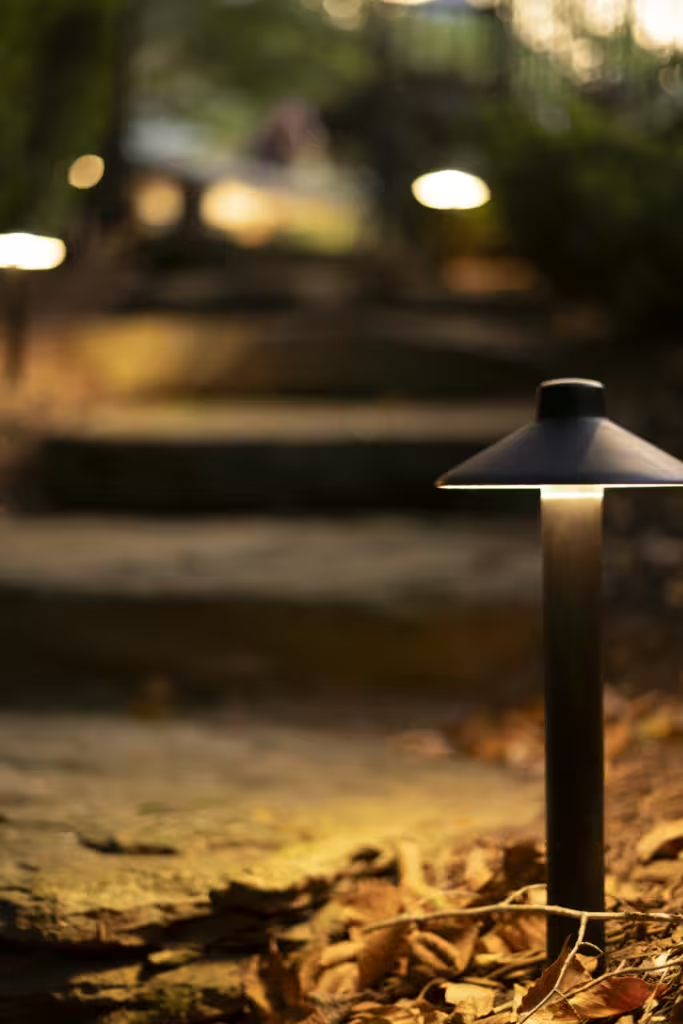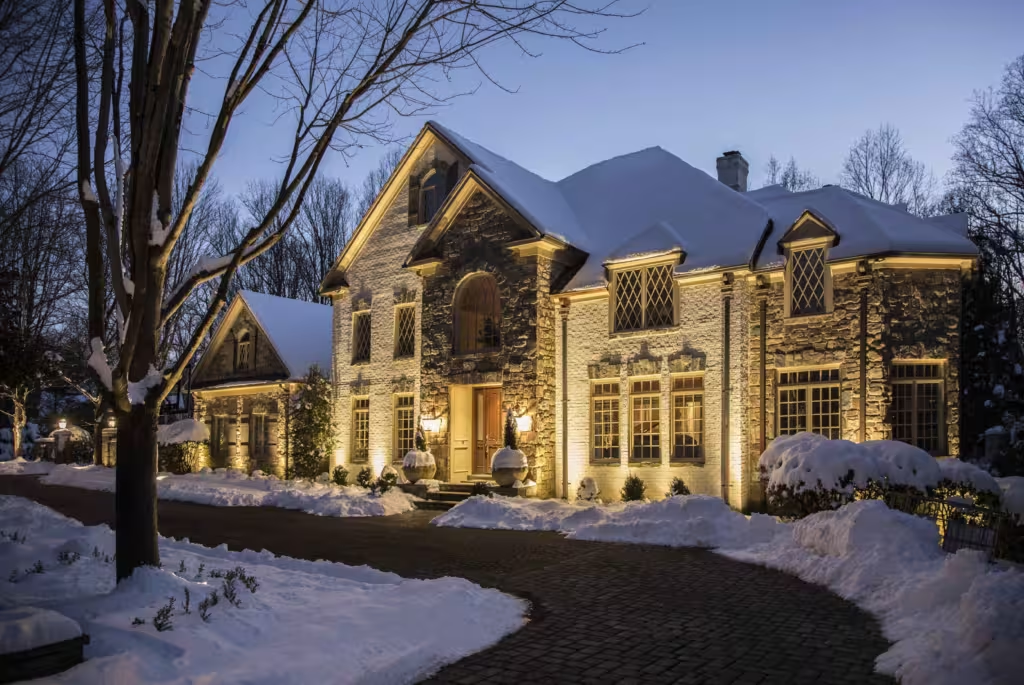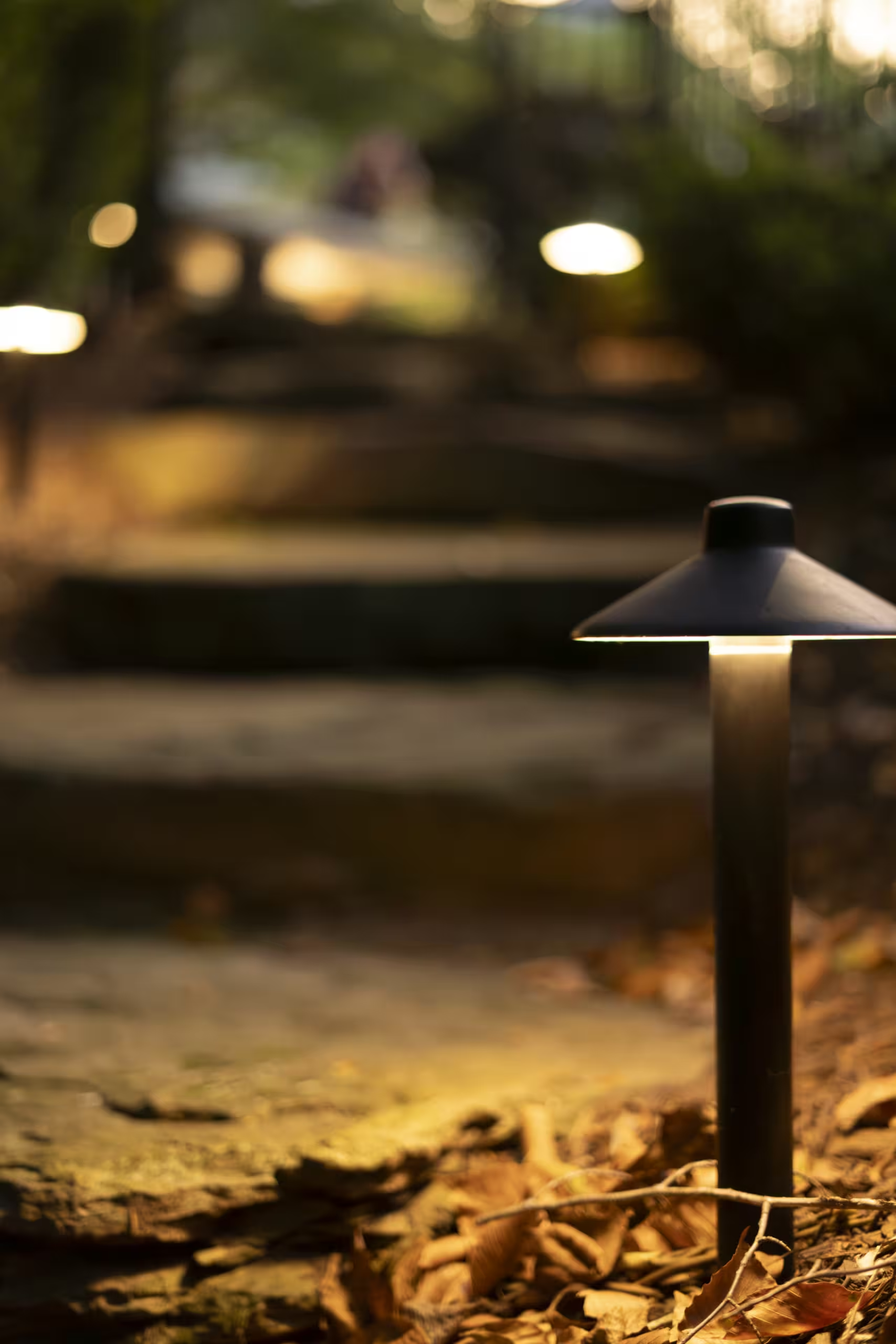When planning a landscape lighting system, understanding the pricing structure is crucial for both homeowners and professionals. The cost of a landscape lighting project is influenced primarily by two major factors: material costs and man hours. Each of these components plays a significant role in determining the overall expense of the installation.
- Material Cost
Entry-Level Products vs. Professional-Grade Products Material costs can vary dramatically depending on the quality and type of products chosen. Entry-level products, such as solar path lights and big-box store offerings, cater to the DIY crowd with simple lighting designs. These products are generally inexpensive but may not offer the durability or performance required for more complex or long-lasting installations.

Professional-Grade Products In contrast, professional-grade landscape lighting products range significantly in price, from as low as $20 to as high as $500 per fixture. Several factors contribute to this price range:
- Material Quality: The type of metal used to construct the fixtures can significantly affect the cost. Options include low-grade aluminum, higher-grade aluminum, brass, high-grade brass, and 316 stainless steel. High-grade materials like 316 stainless steel are more durable and corrosion-resistant, justifying their higher cost.
- Coatings and Finishes: The type and quality of coatings used on the fixtures also impact pricing. Premium coatings offer better protection against weather and wear, extending the fixtures’ lifespan.
- Thickness of Metals: Thicker metals provide more durability and add to the material cost.
- LEDs and Electronics: The quality of LEDs, electronics, and optics used in the fixtures can vary. High-end LEDs offer better efficiency, brightness, and longevity, contributing to higher costs.
- Man Hours
The labor involved in installing a landscape lighting system is another significant factor in determining the overall cost. Man hours can vary based on the complexity and scope of the project:
Simple Projects A straightforward project might involve lighting the front of a home, with all fixtures placed on the ground. Such projects are less labor-intensive and typically require fewer man hours.

Complex Projects More complex installations, such as second-story lighting or lighting that crosses multiple walkways and driveways, require additional labor. Factors that can increase man hours include:
- Distance and Wire Runs: Longer wire runs increase material costs and labor. Installing and securing wiring over greater distances is also more time-consuming.
- Down Lighting: Installing downlights at various heights can be particularly labor-intensive. For example, mounting a light 50-60 feet up a tree or structure is more challenging and time-consuming than installing ground-level lighting.
Fair Pricing Structure True pricing for landscape lighting is not simply based on a per-fixture basis. It is unfair to charge the same for two lights placed 6 feet apart as for two fixtures 200 feet apart. The complexity of the installation and the specific site conditions play crucial roles in determining labor costs.
Conclusion
Understanding the factors determining the pricing of a landscape lighting system can help homeowners make informed decisions and ensure that they receive fair and accurate estimates from professionals. Material costs and man hours are the primary components, with each project’s unique characteristics influencing the final price.
Stay tuned for Part 2 of this series, where we will explore the average costs our customers incur, the products used in the industry, and a detailed comparison of their costs. This deeper dive will provide further insights into making the best choices for your landscape lighting needs.

